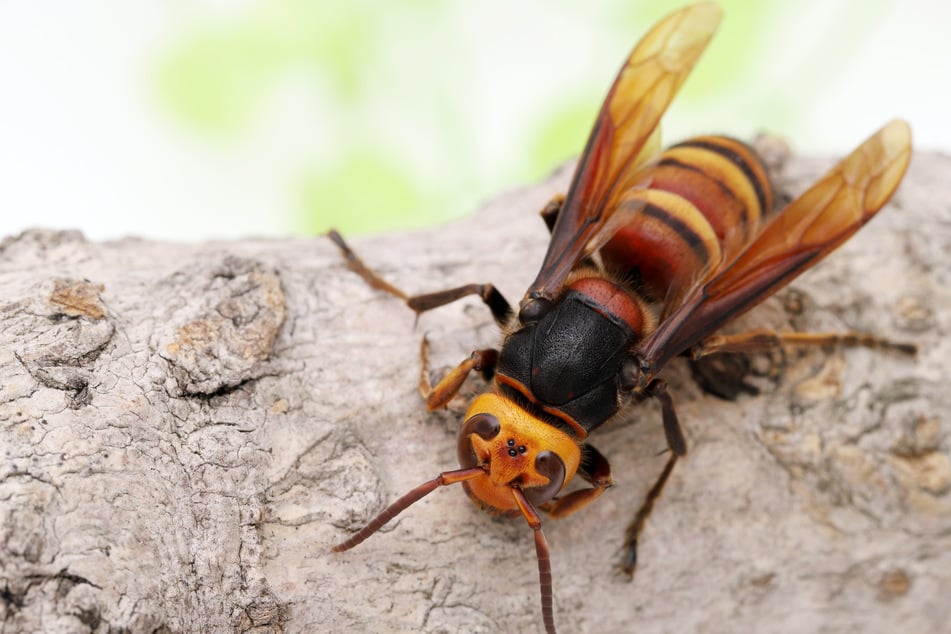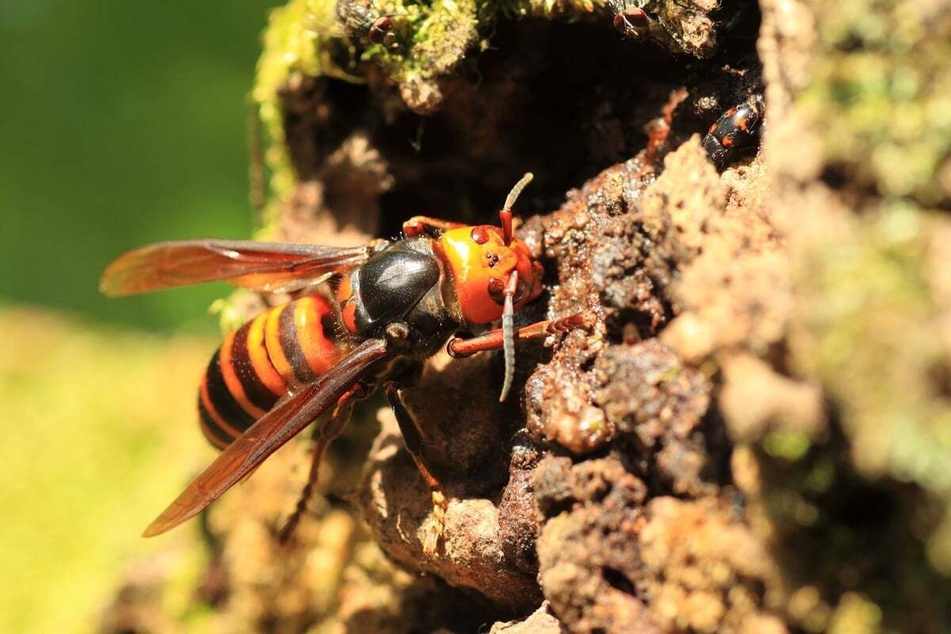What is the largest hornet in the world?
There are some insanely huge hornets in the world, some with stings so powerful that they can genuinely kill humans. What is the largest hornet in the world, though, and how dangerous is it?

There's nothing more frightening than a swarm of wasps or bees, especially when they're on the attack. Well, almost nothing. Hornets are basically giant wasps, and are capable of an immense amount of damage. Ultimately, you don't want to annoy one of these giant and brutal beasts.
Which hornet species takes home the world animal record for being the biggest? What's the world's largest hornet, and how dangerous is it?
What's the world's largest hornet?
The largest hornet in the world is the Asian giant hornet (vespa mandarinia), also known as the "killer hornet." These enormous monstrosities are more than five times larger than your average honeybee or wasp, and are mainly found in east and Southeast Asia. Scarily, they have also been making appearances in North America in recent years.
Resembling your usual European-style wasp, with orange and black stripes and broad heads, the Asian giant hornet is one of the most dangerous and biggest flying insects in the world. They have gray-brown antennae, with an orange shaft and an enormous abdomen.
What makes the Asian giant hornet so frightening is its huge stinger, which is often a quarter of an inch long (about 6-8 mm to be precise). Its venom can be lethal if you're stung multiple times, which isn't great considering that it can attack repeatedly.
The Asian giant hornet is the largest in the world, with a wingspan of around 2.5-3 inches when fully grown. Worker's bodies can reach a length of around 2 inches, while their queens can get to 2.5 inches.
Key characteristics of the Asian giant hornet
The boring specifics of an animal aren't always the most interesting to study, but they are important. Here's a brief summary of all the things you should know about them, so that you're well-equipped for an Asian giant hornet-themed game of trivial pursuit!
Here's a rundown of what you should know about the Asian giant hornet
- Scientific name: Vespa mandarinia
- Family: Wrinkled wasps (Vespidae)
- Size: Workers grow until they are 27 to 45 millimeters (<2 inches) in length, while queens reach up to 55 millimeters (approx. 2.5 inches)
- Wingspan: 76 millimeters (approx. 3 inches)
- Food: Sugar, pollen, insects (e.g. honeybees and beetles)
- Enemies: Honey buzzards, Great Chinese mantis, fan-winged moths
- Distribution: East and Southeast Asia, USA, Canada
For a little while, there was panic in the United States concerning Asian giant hornets, as they were spotted multiple times. If these creatures were to become common place, they could potentially eradicate local bee populations.
Because of this, if you ever see what you think might be an Asian giant hornet, both keep your distance (they are the biggest wasps in the world, after all), and contact relevant local authorities.
How many times can the Asian giant hornet sting you?
There is no known limit to how many times an Asian giant hornet can sting you, but the number is surely very high. They are extremely dangerous and aggressive animals, and should be avoided at all cost. If one starts attacking you, it could sting you more than ten times. This would be both life-threatening and excruciatingly painful.

Is the Asian giant hornet dangerous to humans?
While honeybee venom is actually more toxic than that of the Asian giant hornet, they can only sting once and impart less venom every time. As a result, the world's biggest hornets can deliver ten times more venom, with each hornet containing enough venom in its body to kill around 10 mice.
In fact, Asian giant hornets kill between 30–50 people every year in Japan alone. While most of these deaths are due to allergic anaphylactic reactions rather than the venom itself, the venom is nothing to be played with. The pain is intense and it doesn't die down for a very long time. Meanwhile, the sting site swells up to an unbelievable size.
It is unlikely that one hornet will kill you, unless, of course, you are allergic. If you are stung by multiple Asian giant hornets more than 30 times, then it could be fatal. As a result, you should go to the emergency room if you get stung repeatedly.
The Asian giant hornet is also considered a killer hornet!
Populations of Asian giant hornets grew fast, but urgent action has ensured that they are now in decline in the USA (and all of North America). Famous for taking out entire hives of bees, these enormous and deadly flying monsters have well-earned their colloquial name: The "killer hornet."
While it is unlikely that a single sting from one of these horrifying animals will kill you, they are shockingly hard to get rid of. Feel free to try using similar methods to what we described in our how to get rid of wasps guide, but most importantly, make sure to contact professionals if a hive of Asian giant hornets have appeared on your property.
The environmental devastation that the Asian giant hornet could wreak if populations got out of control means that your decision to hire professionals will not only help keep you safe personally (these things can get through even proper protective clothing), but will help to control their populations and protect the environment.
Cover photo: imago/Panthermedia



